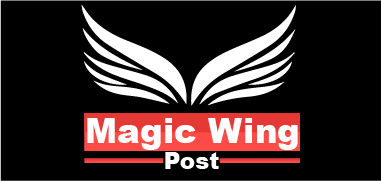Effective financial management is essential for maintaining stability and fostering growth in today’s competitive business environment. One often overlooked aspect of economic strategy is the integration of savings accounts into business processes. By strategically utilizing savings accounts, businesses can enhance cash flow management, build financial resilience, and support long-term goals. This article explores how integrating savings accounts into business processes can provide a solid foundation for economic efficiency and success.
1. Enhancing Cash Flow Management with Dedicated Savings Accounts
Cash flow management is critical to any business’s success, and having a dedicated savings account can significantly optimize this process. By setting aside funds in a high-yield savings account, companies can earn interest on idle cash, turning unutilized funds into active contributors to the company’s financial health. This helps build a buffer for unexpected expenses and ensures that money is always available when needed.
A strategic approach involves segregating funds for specific purposes, such as tax payments, emergency reserves, or planned investments. This segregation simplifies budgeting and financial planning, making it easier to allocate resources effectively. By keeping these funds separate from operational accounts, businesses can prevent cash shortages and maintain smoother operations. Additionally, interest earned on these savings can be reinvested into the industry, further enhancing cash flow and supporting growth initiatives.
2. Integrating Savings into Core Business Processes
Integrating savings accounts into core business processes involves aligning financial management strategies with the broader operational goals of the company. This integration allows businesses to create a cohesive approach where savings are not just a financial afterthought but an integral part of the decision-making process. “When businesses align their savings strategies with their core processes, they ensure that every financial decision supports broader operational goals and contributes to long-term sustainability,” says Gemma Hughes, Global Marketing Manager at iGrafx, a business process management solutions leader. “Incorporating savings goals into business planning and performance metrics creates a clear financial roadmap that guides strategic actions and project prioritization.”
For instance, when savings and cash reserves are considered in project management, risk assessments, and strategic planning, businesses can make more informed decisions that balance growth opportunities with financial prudence. By embedding savings strategies into critical processes such as budgeting, forecasting, and resource allocation, companies can better anticipate financial needs and allocate resources more effectively. This holistic approach ensures that financial resources are managed efficiently and are closely aligned with the company’s operational objectives, promoting a sustainable and resilient business model capable of withstanding economic fluctuations and seizing growth opportunities.
3. Automating Savings to Streamline Financial Processes
Automation is critical to modern business efficiency, and integrating automated savings into financial processes can significantly enhance financial management. By setting up automatic transfers from operational accounts to savings accounts, businesses ensure consistent contributions to their reserves without manual intervention. “Automated savings not only streamline the process but also instill a disciplined approach to financial management, allowing businesses to build a more robust financial foundation without the hassle of manual transfers,” says Sam Hodgson, Head of Editorial at ISA.co.uk, a leading platform for savings account insights. “This approach ensures that reserves are steadily growing, supporting long-term financial stability and strategic business goals.”
Many financial institutions offer tools that integrate savings accounts with business accounting and financial management software, providing seamless tracking and reporting capabilities. This integration offers real-time insights into savings balances, interest accrual, and cash flow, enabling businesses to make more informed decisions about resource allocation and financial planning. With automated savings, companies can reduce the likelihood of human error and administrative burden, making financial management more efficient and reliable. Leveraging these tools enhances the accuracy of financial data and empowers businesses to optimize their cash flow and strategically grow their savings, aligning financial practices with broader business objectives.
4. Leveraging High-Yield Savings Accounts for Strategic Growth
High-yield savings accounts allow businesses to maximize the returns on their reserves, providing higher interest rates than traditional accounts. These accounts can be a valuable tool for enhancing financial performance for companies with substantial cash reserves. By carefully selecting high-yield savings options that align with their economic strategies, businesses can increase their returns while maintaining the liquidity needed for operational flexibility.
“This approach balances the need for accessibility with the desire to earn higher interest rates, providing a strategic way to manage reserves. By aligning savings strategies with business goals, companies can support long-term growth initiatives, such as funding new projects, expanding operations, or investing in new technologies,” says Gerrid Smith, Founder & CEO of Fortress Growth
Conclusion
Integrating savings accounts into your business processes is a strategic move beyond simply setting money aside; it’s about making your savings work actively for your business. By enhancing cash flow management, automating savings contributions, and leveraging high-yield accounts, companies can build a more resilient financial structure that supports immediate and long-term goals. As the economic landscape continues to evolve, adopting a strategic approach to savings can provide businesses with the stability and flexibility needed to thrive. Embrace this strategy to strengthen your financial management processes and unlock new avenues for growth and success.






